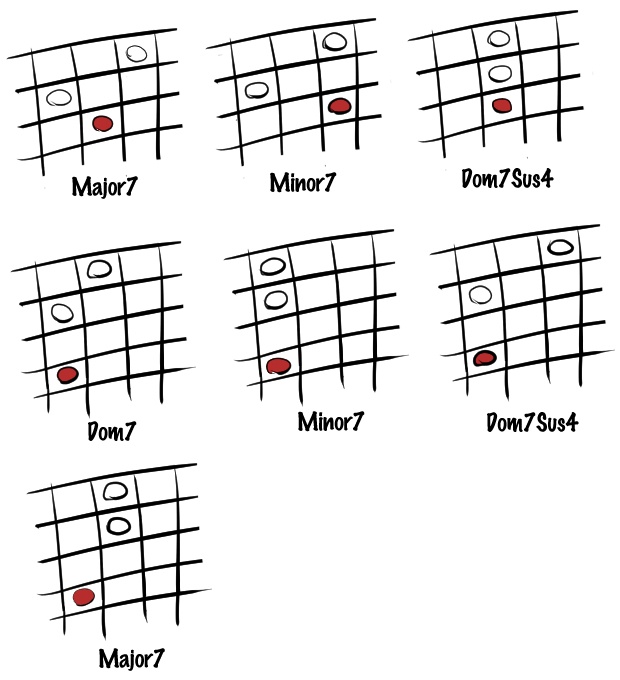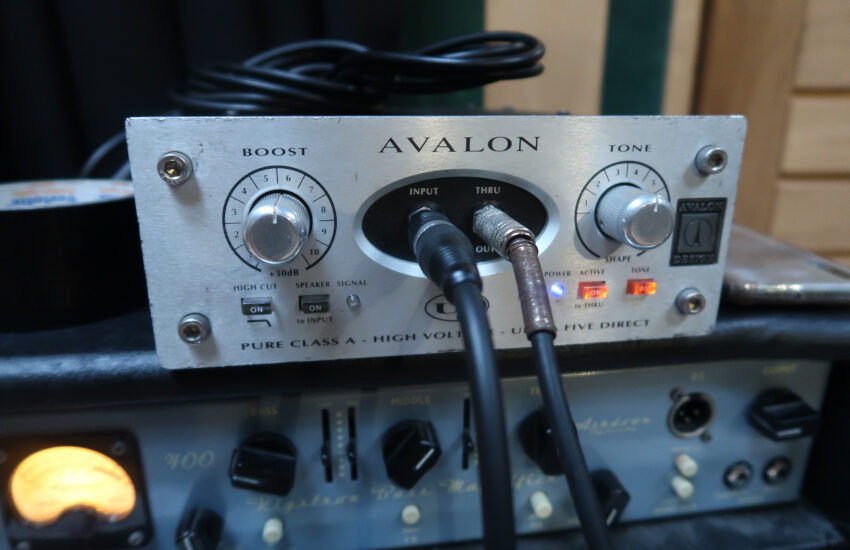As bass players we are usually only playing one note at the same time, unlike our guitarist counter-parts. But adding some chords to our vocabularies can not only spice up our basslines, but also help us in understanding harmony better.
In this lesson I will introduce some chord shapes that require you to play two notes at the same time (double stops) and some shapes that require you to play three notes at the same time. To conclude the article I will give you some bassline examples incorporating chords. If you are unfamiliar with how chords are constructed, I recommend you first take a look at these two articles about how chords work, to make sure the rest of this article makes any sense at all:
How do chords work? Major, minor and diminished
How do chords work? Seventh and extended chords
Double stops on bass

The most basic way of incorporating chords in your playing is using double stops, or two-note chords. The shapes you see above, represent two ways to play a double stop on bass. As always the red circle represents the root note. In the major and minor shapes the second note represents the third of each chord. In the sus4 shapes, the second note is a perfect fourth above the root.
The upper three shapes span over two strings. Note that if your play these shapes in the lower register on the neck, your chords will sound muddy and undefined. I recommend only using these shapes higher on the neck of your bass.
You will notice that the bottom three shapes will work almost anywhere on the neck. Because the root and third/fourth are more than an octave apart, the notes have more room in the audio spectrum to sound, making them less muddy. The bottom three shapes are the shapes I almost use exclusively.
Three note chord shapes (seventh chords) on bass

When we expand the two note shapes to three note shapes, we can decide between adding the 5th or the 7th to the shape. If you look at the shapes above, you notice that I chose to expand the chords to seventh chords.
Why would you choose the 7th over the 5th? Good question! The 5th is omitted because it is the most unessential note in the chord. As we’ve discussed in our lesson about chord construction, the difference between a major and a minor chord is the third. The fifth of the chord is the same in both chords and thus isn’t contributing in representing wether the chord is major and minor, and thus has less importance.
However, when we add a seventh to a chord, we add a whole new flavor to the sound. It’s like adding some extra spices into your dish of deliciousness.
Applying bass chords to your playing
I recorded two examples where I am using chords on bass. The first example features a groove you can play over a C7 chord. I use a double stop playing the C on the 8th fret of the E string and the E (third) above it on the 9th fret of the G string. I also use a C7 shape starting on the 15th fret of the A string. (I leave out the root, and slide into the third.)

The second example features a chordal sequence that you could play as an intro. Notice that next to adding some reverb, I play a vibrato on the chords that almost makes it sound like I am using a chorus on the bass. For me this really adds a lot of liveliness to the sound.

Using bass chords in your practice routine
Besides using these chords in your basslines, they can also be an amazing tool for your practice routine. When working with a looper pedal or if you have access to a DAW (like Cubase or Logic), you can record a chord progression and then play different parts over it. For example, you can see what basslines work over progressions, but also use these chords to work on your soloing concept. The possibilities are endless!
More chord shapes
Of course the shapes presented to you in this lesson are not the only shapes you can play on bass. These are just the shapes I have most frequently used and encountered over the years. Try to find shapes that work for you and also incorporate open strings to get wider voicings.
There are also other ways to play chords on bass. Take for example a groove I’ve recorded for this website where I used harmonics to create chords: “Groove Backpack #7 – Bass Chords with harmonics“.
Other players
Some amazing bass players to check out when it comes to chordal-playing are Janek Gwizdala, Thundercat and Michael Pipoquinha. Check out these examples of their playing and let me know in the comments what you think.
I hope you found this article helpful! Let me know in the comments what your thoughts are and if you have any questions or suggestions.

